What is a River Basin?
Starting with the basics: What does it mean when you are driving along and you see that sign that says “Eno River Basin”? In this section we seek to provide educational resources to help understand the basics.
From Google:
“A river basin is an area of land, dissected and drained by many streams and creeks that flow into one another, eventually joining together into a river.”
River Basin
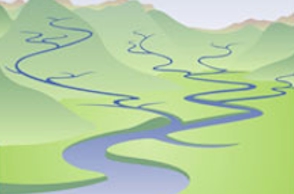
“A river basin is the land that water flows across or under on its way to a river. Just as a bathtub catches all of the water that falls within its sides, a river basin sends all of the water falling within it to a central river and out to an estuary or to the ocean.” http://www.ncstormwater.org/pages/workbook_riverbasin.html
Drainage Basin
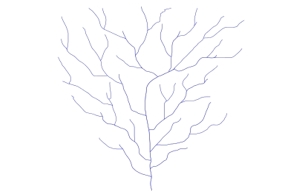
“A drainage basin or catchment basin is an extent or an area of land where all surface water from rain, melting snow, or ice converges to a single point at a lower elevation, usually the exit of the basin, where the waters join another body of water, such as a river, lake, reservoir, estuary, wetland, sea, or ocean.”
Which river basin do you live in?
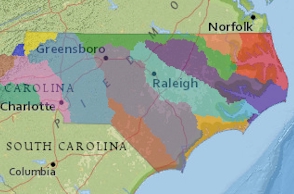
The environmental education section of the N.C. Office of Environmental Education and Public Affairs was established to increase environmental literacy in North Carolina. Use the interactive map on the department website to learn more about river basins in our state.
Just like a river basin, a,”catchment basin”, and “drainage basin” all refer to the geographical area that has the shape of a giant bowl. The rim around the basin are it’s highpoints (these can be hilltops, mountains, or ridgelines) and any water that falls into that area, whether rain or snow, all gradually trickles downhill and flows into the creeks and streams, and eventually to the river..
What is a Watershed?
A watershed is the land that water is “shed” from, before it reaches a river. A river basin can contain more than one watershed:
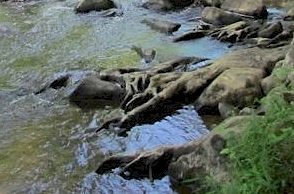
What is the Difference Between a River Basin and a Watershed?
“Both river basins and watersheds are areas of land that drain to a particular water body, such as a lake, stream, river or estuary. In a river basin, all the water drains to a large river. The term watershed is used to describe a smaller area of land that drains to a smaller stream, lake or wetland.”
http://milwaukeeriverkeeper.org/whats-a-river-basin-whats-a-watershed/
The watershed provides the river with a constant source of clean water.
We all live in a watershed. But what is it and what is its place in our community?
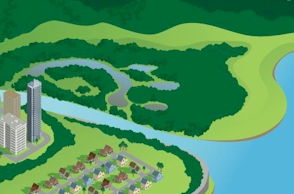
Clean, healthy watersheds depend on an informed public to make the right decisions when it comes to the environment…The leading causes of pollution are sediments, bacteria (such as E. coli) and excess nutrients (such as nitrogen and phosphorus)…
http://www.nature.org/ourinitiatives/regions/northam/..
The best way to understand river conservation is understanding the threats to the watershed…
Three of the biggest threats to the watershed: leaking sewer systems, over development near rivers, and imperfections in water treatment plants.
Overview
Leaking Sewer Pipes
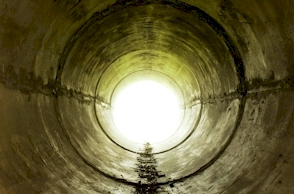
You may have heard about a crisis in our country involving aging bridges that need to be replaced. Most of us are already aware that there are thousands of bridges across the country in need of repair. But did you know there’s another, lesser known, aspect of our infrastructure that is aging as well?; … It’s our sewer systems..
learn more
Concrete and Urban Development
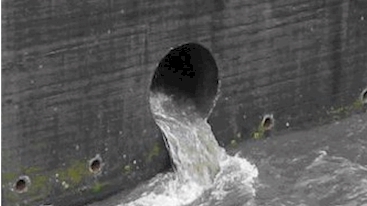
Rivers depend on their surrounding lands for a constant supply of clean water. But in the environmental sciences, concrete and asphalts are known as “impervious” surfaces. They trap and channel water without allowing it to soak into the land. What’s missing in this picture?: The entire process of water flowing and filtering through soil..
learn more
Imperfections in our Water Treatment Plants
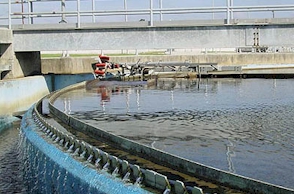
Water purification is the process of removing contaminants from our dirty water, but did you know that many of the water treatment plants in our country were built after the clean water act of the 1970’s? Like our sewer systems, they are also part of an aging infrastructure that need repairs and upgrades. And even at their best there are dangerous trace elements they can’t completely remove.
learn more
Each of these three threats, the leaks in sewer pipes, the impact of hard surfaces used in development, and the limitations of water treatment plants, pose individual threats to the health of the rivers. And, as water goes through a repeated cycle they combine and interact:
Leaking Sewer Systems & Household Waste Click here to Read..

